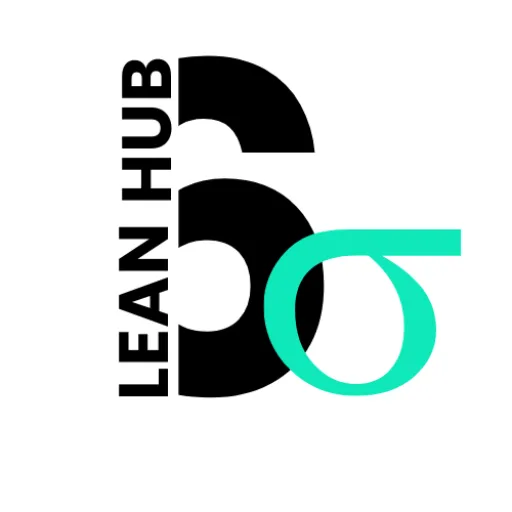Mapping the Value Stream: Optimizing Processes for Efficiency
Value Stream Mapping (VSM) serves as a powerful tool in our quest to enhance efficiency and eliminate waste within our processes.
By visually representing the flow of materials and information, we can gain a comprehensive understanding of how value is created in our organization.
This mapping technique allows us to identify each step in our processes, from the initial stages of production to the final delivery of products or services to our customers.
As we engage in this exercise, we begin to see not only the value-adding activities but also the non-value-adding ones that can hinder our overall performance. As we delve deeper into VSM, we recognize its role in fostering collaboration among team members. By involving various stakeholders in the mapping process, we create a shared understanding of our workflows and the challenges we face.
This collective insight encourages open dialogue and brainstorming, leading to innovative solutions that can streamline our operations. Ultimately, VSM empowers us to visualize our processes, making it easier to pinpoint areas for improvement and align our efforts toward achieving operational excellence.
Key Takeaways
- Value Stream Mapping is a visual tool used to analyze and improve the flow of materials and information in a process.
- Identifying waste in processes is crucial for eliminating non-value adding activities and improving efficiency.
- Streamlining process flow involves removing bottlenecks and reducing lead times to improve overall productivity.
- Implementing lean principles such as 5S and standardized work can help eliminate waste and improve process efficiency.
- Utilizing technology for optimization, such as automation and data analytics, can help streamline processes and improve overall performance.
Identifying Waste in Processes
In our pursuit of efficiency, identifying waste within our processes is crucial. Waste can manifest in various forms, including excess inventory, waiting times, unnecessary transportation, and overproduction. By systematically analyzing our workflows, we can uncover these inefficiencies that not only drain resources but also impede our ability to deliver value to customers.
We must adopt a mindset that constantly questions the necessity of each step in our processes, asking ourselves whether it contributes to the end goal or simply adds clutter. Moreover, recognizing waste is not merely about eliminating it; it’s about understanding its root causes. We can employ techniques such as the “5 Whys” to dig deeper into the reasons behind inefficiencies.
By asking “why” multiple times, we can trace back to the fundamental issues that lead to wasteful practices. This approach not only helps us address immediate concerns but also fosters a culture of continuous improvement where we remain vigilant against the emergence of new forms of waste.
Streamlining Process Flow
Once we have identified areas of waste, the next step is to streamline our process flow. This involves re-evaluating how tasks are organized and executed to ensure a smooth transition from one stage to another. We can implement strategies such as reducing handoffs between departments or consolidating similar tasks to minimize delays and enhance productivity.
By creating a more cohesive workflow, we can significantly reduce lead times and improve overall efficiency. In addition to reorganization, we should also consider the physical layout of our workspaces. A well-designed environment can facilitate better communication and collaboration among team members, ultimately leading to faster decision-making and execution.
By strategically placing resources and tools within easy reach, we can eliminate unnecessary movements and create a more fluid process flow. This holistic approach not only enhances operational efficiency but also contributes to a more engaged and motivated workforce.
Implementing Lean Principles
| Metrics | Definition | Importance |
|---|---|---|
| Lead Time | The time it takes to complete a process from start to finish. | Reduction in lead time indicates improved efficiency and customer satisfaction. |
| Value-Added Ratio | The ratio of value-added activities to non-value-added activities. | Higher value-added ratio signifies better resource utilization and waste reduction. |
| Defect Rate | The percentage of defective products or services. | Lower defect rate indicates higher quality and customer satisfaction. |
| Inventory Turnover | The number of times inventory is sold or used in a given period. | Higher turnover indicates efficient use of resources and reduced carrying costs. |
Implementing lean principles is essential for fostering a culture of efficiency and continuous improvement within our organization. Lean methodology emphasizes maximizing value while minimizing waste, which aligns perfectly with our goals. By adopting practices such as Just-In-Time (JIT) production and Kanban systems, we can ensure that resources are utilized effectively and that we respond swiftly to customer demands.
These principles encourage us to focus on delivering value rather than merely increasing output. Furthermore, embracing lean principles requires a shift in mindset across all levels of the organization. We must cultivate an environment where every employee feels empowered to contribute ideas for improvement.
This collaborative approach not only enhances engagement but also leads to innovative solutions that drive efficiency. As we implement lean practices, we should regularly assess their impact and make adjustments as needed, ensuring that we remain agile and responsive to changing circumstances.
Utilizing Technology for Optimization
In today’s fast-paced business landscape, leveraging technology is paramount for optimizing our processes. Advanced tools such as automation software, data analytics platforms, and artificial intelligence can significantly enhance our operational capabilities. By automating repetitive tasks, we free up valuable time for our employees to focus on higher-value activities that require creativity and critical thinking.
This shift not only boosts productivity but also enhances job satisfaction among team members. Moreover, data analytics allows us to gain insights into our processes that were previously unattainable. By analyzing performance metrics and trends, we can make informed decisions that drive continuous improvement.
For instance, predictive analytics can help us anticipate demand fluctuations, enabling us to adjust our production schedules accordingly. As we embrace technology as an enabler of optimization, we position ourselves at the forefront of innovation and efficiency.
Continuous Improvement and Kaizen
The philosophy of continuous improvement is at the heart of our operational strategy. Embracing the concept of Kaizen—meaning “change for better”—encourages us to seek incremental improvements in all aspects of our work. This mindset fosters a culture where every employee is encouraged to identify opportunities for enhancement, no matter how small they may seem.
By celebrating these incremental changes, we create a sense of ownership among team members and reinforce the idea that everyone plays a vital role in driving progress. To effectively implement continuous improvement initiatives, we must establish regular feedback loops within our organization. This could involve conducting periodic reviews of processes or holding brainstorming sessions where employees can share their insights and suggestions.
By actively seeking input from all levels of the organization, we ensure that our improvement efforts are well-informed and aligned with the realities of day-to-day operations. This collaborative approach not only enhances our processes but also strengthens team cohesion and morale.
Training and Empowering Employees
Training and empowering employees is essential for sustaining a culture of efficiency and continuous improvement. We must invest in comprehensive training programs that equip our workforce with the skills and knowledge necessary to excel in their roles. By providing ongoing education on lean principles, process optimization techniques, and technology utilization, we empower employees to take ownership of their work and contribute meaningfully to organizational goals.
Moreover, fostering an environment where employees feel valued and heard is crucial for engagement and motivation. We should encourage open communication channels where team members can voice their ideas and concerns without fear of retribution. By recognizing and rewarding contributions to process improvements, we reinforce a culture of empowerment that inspires individuals to take initiative and drive positive change within their teams.
Measuring and Monitoring Performance
To ensure that our efforts toward efficiency and continuous improvement yield tangible results, measuring and monitoring performance is vital. We must establish key performance indicators (KPIs) that align with our organizational goals and provide insights into how well we are achieving them. These metrics should encompass various aspects of our operations, including productivity levels, lead times, customer satisfaction scores, and waste reduction rates.
Regularly reviewing these performance metrics allows us to identify trends and areas for further improvement. By analyzing data over time, we can assess the effectiveness of our initiatives and make informed decisions about future strategies. Additionally, sharing performance results with employees fosters transparency and accountability within the organization.
When team members see how their contributions impact overall performance, they are more likely to remain engaged and committed to driving continuous improvement efforts. In conclusion, by understanding value stream mapping, identifying waste in processes, streamlining flow, implementing lean principles, utilizing technology for optimization, embracing continuous improvement through Kaizen, training employees effectively, and measuring performance diligently, we position ourselves for sustained success in an ever-evolving business landscape. Together, we can create an organization that not only meets but exceeds customer expectations while fostering a culture of innovation and excellence.
FAQs
What is value stream mapping?
Value stream mapping is a lean management technique used to analyze and improve the flow of materials and information required to bring a product or service to a customer. It involves creating a visual representation of the entire process, from raw materials to the customer, in order to identify and eliminate waste.
What are the benefits of value stream mapping?
Value stream mapping helps organizations identify and eliminate waste, reduce lead times, improve quality, and increase efficiency. It also provides a clear understanding of the current state of the process and helps in developing a future state map for improvement.
How is value stream mapping done?
Value stream mapping is typically done by creating a visual representation of the entire process using standardized symbols and icons. This involves mapping the flow of materials and information, as well as capturing data on cycle times, lead times, and other key metrics.
What are the key elements of value stream mapping?
The key elements of value stream mapping include identifying the value stream, mapping the current state, analyzing the current state, designing the future state, and implementing improvements. It also involves identifying and eliminating waste, and creating a plan for continuous improvement.
Who uses value stream mapping?
Value stream mapping is used by organizations in various industries, including manufacturing, healthcare, and service industries. It is typically used by cross-functional teams, including managers, engineers, and frontline employees, to improve processes and drive continuous improvement.






